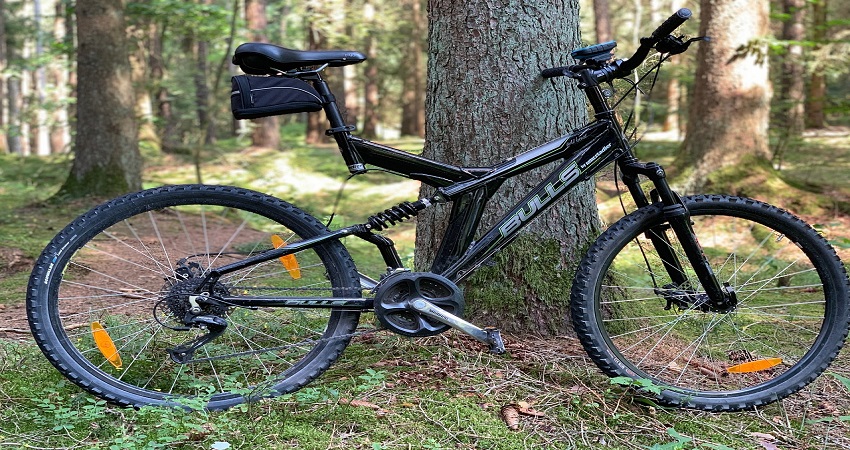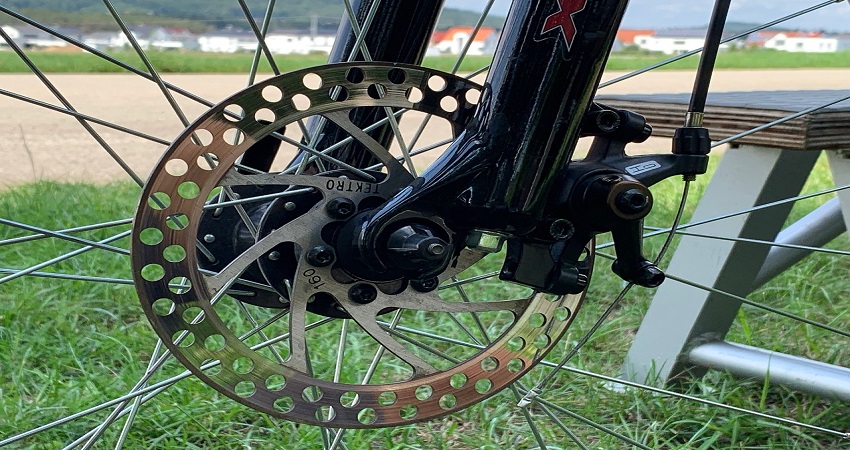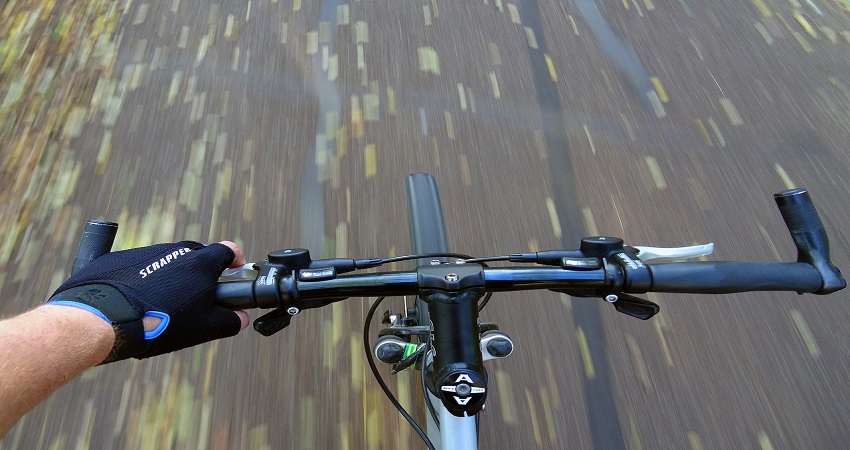Yes, mountain bikes can be used on snow. However, there are specific types of bikes and modifications that should be made to ensure better control and traction in snowy conditions.
(120 words) Mountain biking is a thrilling outdoor activity that allows individuals to explore off-road terrains and navigate challenging trails. While mountain bikes are designed for rugged terrains like dirt, rocks, and sand, many enthusiasts wonder whether they can be used on snow as well.
The short answer is yes. However, riding a regular mountain bike on snow can be quite challenging and potentially hazardous. Snow can be slippery and unstable, making it difficult to maintain balance and control. In order to ride a mountain bike on snow effectively, there are certain adjustments and modifications that can be made to enhance performance and safety. This article aims to provide insights on utilizing mountain bikes on snow, as well as tips for a better and more enjoyable winter riding experience.
Factors To Consider
When it comes to taking your mountain bike out on the snow, there are several factors you should consider to ensure a safe and enjoyable ride. From tire selection to suspension and braking, each element plays a crucial role in determining how well your bike will handle on the slippery terrain. Let’s take a closer look at these factors and their importance.
Tire Selection
Choosing the right tires for snow riding is essential to maintain traction and control. Snow-specific tires are designed with a deeper and wider tread pattern, allowing them to grip into the snow and provide better stability. Look for tires with large knobs and sipes, as these features create more surface area for grip. Additionally, wider tires with lower tire pressure can improve flotation and prevent sinking into the snow. Remember to deflate your tires slightly before hitting the snowy trails to maximize traction.
Suspension
Your bike’s suspension system also plays a significant role in navigating snowy terrains. A suspension fork helps absorb impacts and smooth out the ride, ensuring better control on uneven surfaces. It is recommended to adjust your suspension to a softer setting when riding in the snow. This will enhance your bike’s ability to absorb bumps and maintain stability. An adequate suspension setup allows your tires to stay in contact with the snowy surface, improving traction and making your ride more comfortable.
Braking
Effective braking is crucial for maintaining control and preventing accidents when riding on snow. In snowy conditions, it’s essential to have reliable brakes that can stop your bike quickly and safely. Disc brakes are generally more effective than rim brakes in wet and icy conditions, as they provide consistent stopping power regardless of the weather. Regularly check your brake pads and ensure they are in good condition to optimize your braking performance. Remember to apply your brakes gradually and avoid sudden, hard stops to prevent skidding on the slippery surface.
| Factors to Consider | Important Points | |
|---|---|---|
| Tire Selection | Look for snow-specific tires with deep tread patterns and wide knobs. Wider tires with lower pressure improve flotation and traction. | |
| Suspension | Adjust your suspension to a softer setting. This helps absorb impacts and keeps your tires in contact with the snow. | |
| Braking | Use disc brakes for consistent stopping power. Check your brake pads regularly and brake gradually to avoid skidding on the slippery surface. | |
Modifications For Snow Riding
When it comes to enjoying the thrill of mountain biking, snowy conditions can present a unique set of challenges. However, with a few modifications, you can transform your trusty mountain bike into a winter-ready machine. In this article, we will explore three key modifications that can help you conquer the snow: studded tires, fat bikes, and lowering tire pressure.
Studded Tires
Studded tires are specially designed to provide superior traction on icy surfaces, making them a popular choice for snow riding. These tires feature metal studs embedded in the tread, which dig into the ice and provide stability and control. By using studded tires, you can confidently navigate even the slipperiest of snowy trails.
Fat Bikes
Fat bikes have gained popularity in recent years due to their ability to tackle various terrains, including snow. These bikes feature oversized tires that create a larger contact patch, distributing the weight and providing excellent traction. With their wider tires, fat bikes can effortlessly float over soft snow, allowing riders to venture into areas that would be otherwise inaccessible.
Lowering Tire Pressure
Lowering tire pressure is a simple yet effective modification for snow riding. By reducing the air pressure in your tires, you increase their surface area, enhancing grip and traction. This adjustment allows the tires to better conform to the uneven terrain of snow-covered trails, giving you better control and stability. However, it’s important to find the right balance between too low and too high tire pressure to avoid damaging the rims or compromising performance.
A Summary of Modifications for Snow Riding:
- Studded tires provide superior traction on icy surfaces.
- Fat bikes with oversized tires are designed for various terrains, including snow.
- Lowering tire pressure enhances grip and traction on snow-covered trails.
By implementing these modifications, you can confidently hop on your mountain bike and experience the joy of snow riding. Remember to choose the modification that suits your riding style and the specific snow conditions you’ll be encountering. Stay safe, have fun, and enjoy the exhilarating adventure of mountain biking on snow!
Techniques For Riding On Snow
Winter doesn’t have to be a time to put away your mountain bike and wait for warmer weather. With the right techniques, you can enjoy the thrill of riding through snowy landscapes. Here, we will discuss three essential techniques for mountain biking on snow: Balancing, Modulating brakes, and Avoiding deep snow.
Balancing
When riding on snow, it’s crucial to maintain a proper balance to avoid slipping and sliding. Keep your weight centered over the bike and distribute it evenly between the wheels. This helps provide stability and control, allowing you to navigate through the snowy terrain effortlessly. Additionally, try to keep your pedals level to prevent any sudden weight shifts that could lead to loss of balance.
Modulating Brakes
The snowy conditions can reduce traction, making it necessary to have precise control over your bike’s speed. One effective technique is modulating your brakes. Instead of squeezing the brakes hard, apply gentle pressure intermittently. This allows the tires to maintain contact with the ground and prevents them from locking up. Remember to anticipate your stops and slow down gradually to avoid any sudden jolts that might cause you to lose control in the slippery snow.
Avoiding Deep Snow
While imitating a white-knuckled winter thrill, plowing through deep snow can be challenging and exhausting. To avoid getting stuck, aim to ride on packed or groomed snow trails. They offer better traction and make it easier to maneuver through the winter wonderland. If riding off-trail becomes unavoidable, choose your path wisely by selecting areas with the least amount of snow accumulation, such as the sides of trails where the ground is more compact.
If you ever find yourself in a deep snow section, try to maintain momentum by keeping a consistent pedal cadence and shifting your weight towards the back of the bike. This technique helps prevent the front wheel from sinking too deep and allows for a smoother exit from the snowy obstacle.
With these techniques in mind, you can confidently take your mountain bike out onto the snowy trails and enjoy a whole new level of fun and adventure. So, why wait for spring when you can experience the thrill of winter biking?
Safety Precautions
Mountain bikes can be used on snow with the right safety precautions. Riders should ensure proper tire selection, maintain low tire pressure for improved traction, and use appropriate downhill techniques to navigate snowy terrain. Taking these precautions will enhance the biking experience while minimizing the risk of accidents.
Wearing Proper Gear
When heading out for a snow adventure on your mountain bike, safety should always be a top priority. Wearing the right gear can make all the difference in keeping you safe and comfortable throughout your ride. Here are some essential items to consider:
- Helmets: Always wear a helmet that fits properly and is designed for snow biking. It will protect your head in case of any falls or collisions.
- Goggles: Snow and wind can impair your vision, so it’s important to wear goggles to protect your eyes from the elements. Look for goggles that offer both UV protection and anti-fog features.
- Layers: Dressing in layers allows you to regulate your body temperature as you ride. Start with a moisture-wicking base layer, add an insulating mid-layer, and finish with a waterproof outer layer.
- Gloves and boots: Invest in gloves and boots specifically designed for winter sports. These will keep your hands and feet warm and protected from the freezing temperatures.
- Reflective clothing: Visibility is crucial when riding in snowy conditions. Wear reflective clothing or add reflective tape to your gear to make sure you’re easily spotted by others on the trail.
Checking Weather Conditions
Before embarking on your snow biking adventure, it’s essential to assess the current weather conditions. Snowy trails may offer a unique and thrilling experience, but they also present additional challenges that can affect your safety.
Here’s what you should keep in mind:
- Snow depth: Check the snow depth to ensure your mountain bike’s tires have enough traction. If the snow is too deep, it can make riding difficult or even impossible.
- Temperature: Cold temperatures can compromise your body’s ability to function properly. Be aware of the temperature and dress accordingly to avoid hypothermia or frostbite.
- Wind speed: Strong winds can make riding more challenging and increase the risk of windburn or hypothermia. Check the wind speed before heading out and adjust your plans if necessary.
- Avalanche risks: If you plan to ride in mountainous areas, evaluate the avalanche risk. Pay attention to warnings and advisories issued by local authorities to ensure your safety.
Riding With A Buddy
When it comes to snow biking, having a riding buddy can greatly enhance your safety. Riding with a companion not only provides extra support in case of an emergency but also adds to the overall enjoyment of the experience. Here’s why riding with a buddy is important:
- Assistance: In case of a fall or injury, your riding buddy can provide immediate assistance or seek help if needed.
- Accountability: Riding with a buddy encourages responsible behavior and helps ensure that safety precautions are followed.
- Navigation and motivation: Having a riding buddy can make it easier to navigate through unfamiliar trails and push you to overcome challenges. Remember, even if you’re an experienced snow biker, it’s always better to ride with someone else. Make a plan, communicate effectively, and keep each other safe throughout the adventure.
Frequently Asked Questions For Can Mountain Bikes Be Used On Snow?
Can Mountain Bikes Be Used On Snow?
Sure! Mountain bikes can be modified with fat tires and studded tires to provide better traction on snowy and icy trails. Lower tire pressure helps prevent slipping, and larger knobs improve grip on the snow. However, it’s important to ride cautiously and adjust your speed accordingly to avoid accidents.
What Tires Are Best For Snow Biking?
Fat tires are the best option for snow biking. They have a larger footprint and lower tire pressure, allowing for better traction on snow and ice. Studded tires are also an excellent choice, as they have metal studs embedded in the tread to provide even more grip on icy surfaces.
How To Maintain A Mountain Bike For Snow Riding?
To maintain your mountain bike for snow riding, regularly clean and lubricate the drivetrain to prevent rust and ensure smooth shifting. Check the tire pressure before each ride, as lower pressure is recommended for better traction on snow. Consider applying a protective coating to the frame and components to prevent corrosion from the wet conditions.
Are Mountain Bikes With Suspension Suitable For Snow Biking?
Yes, mountain bikes with suspension are suitable for snow biking. Suspension helps absorb impact and improves overall comfort when riding on uneven terrain. However, it’s essential to adjust the suspension settings according to the snowy conditions to avoid loss of traction or instability.
Conclusion
To conclude, it is possible to use mountain bikes on snow, thanks to specialized fat tire bikes designed for winter conditions. With their wider tires and enhanced traction, these bikes provide an exciting and adventurous way to explore snowy terrains.
However, it is important to take necessary precautions, such as using appropriate gear and adjusting riding techniques. So, if you’re looking to take your mountain biking off-season, don’t let the snow stop you from experiencing new thrills!



